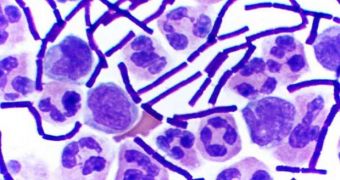In one of the most interesting conclusions ever to be derived from a scientific study, researchers learned recently that bacteria, microorganisms that exist virtually anywhere on the planet, have a sense of smell.
This is a very interesting discovery, considering that fact that some of the worst smells you can name most likely come from decomposing bacteria, or bacteria that are decomposing something.
The new finding was made by a group of marine microbiologists from the Newcastle University, in the United Kingdom, ScienceDaily reports.
The molecular nose outfitted on the bacteria enables the tiny living organisms to detect chemicals such as ammonia in their surrounding, chemicals that can go airborne, and also produce smells.
Though their sensing tool may seem different than our own noses, the basic principle is the same, researchers say – an instrument capable of identifying the existence of volatile chemicals in the air.
For example, in environments rich in bacterial cultures, some of the members of the colony may detect the existence of other members – with which they are not in direct contact – by smelling the traces of nitrogen gas the former produce.
In addition to discovering the smell itself, the bacteria can also respond to such stimuli. The NU research team, led by expert Dr Reindert Nijland, found that the microorganisms can produce biofilms.
These are very hard shells, resembling slime, that cover the colonies, preventing them from being wiped out from the outside.
Certain bacteria, for instance, will learn how to cooperate and produce a biofilm together, which would in turn increase their odds of survival, while decreasing those of their competitors.
“This is the first evidence of a bacterial 'nose' capable of detecting potential competitors. The next step will be to identify the nose or sensor that actually does the smelling,” Nijland says.
“Slime is important in medical and industrial settings and the fact that the cells formed slime on exposure to ammonia has important implications for understanding how biofilms are formed and how we might be able to use this to our advantage,” he concludes.

 14 DAY TRIAL //
14 DAY TRIAL //